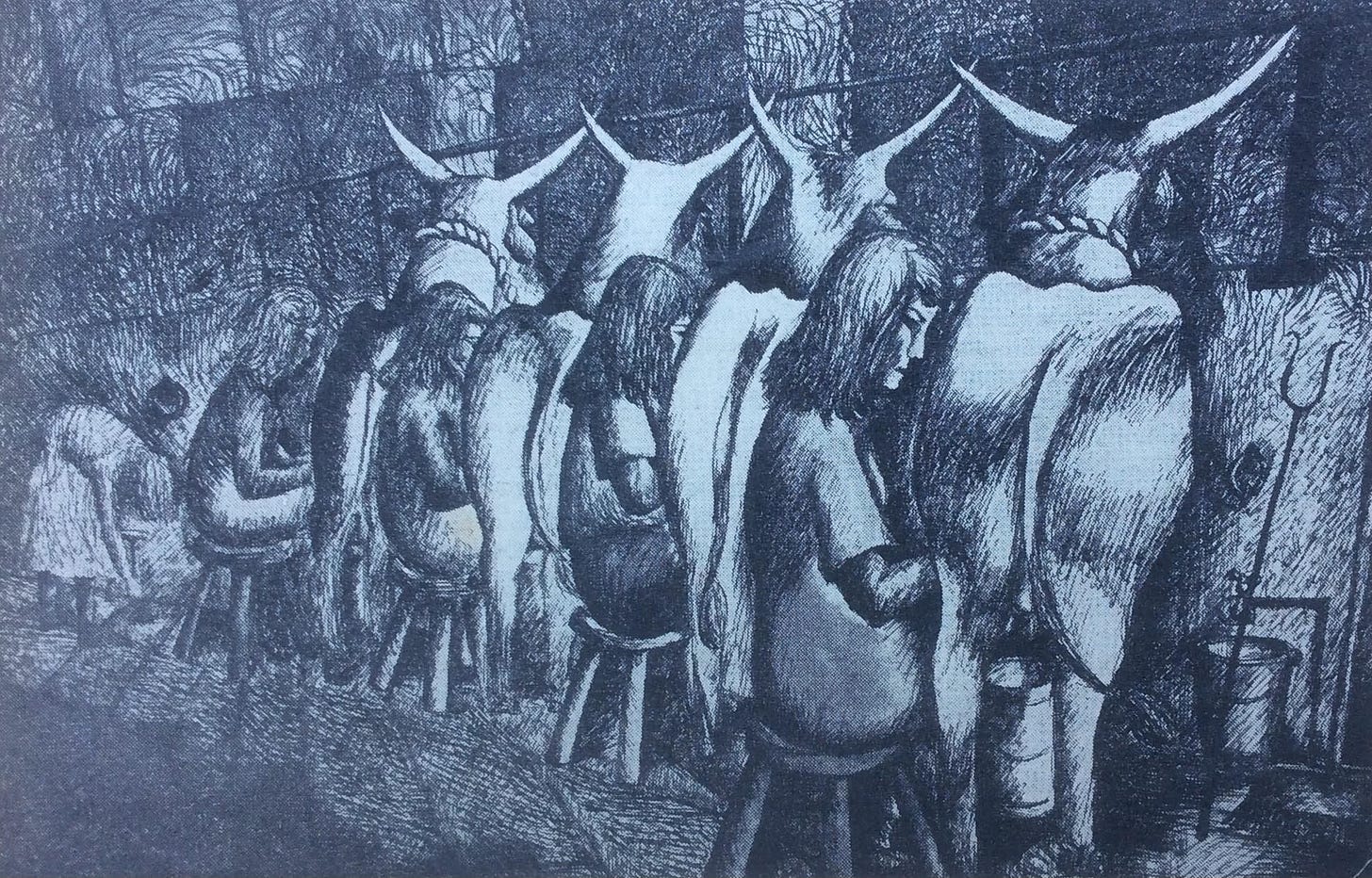On Claudia Williams (1933-2024)
One of my favourite painters has died. Here's a look at her work through her own words.
Very sad to hear of the death of artist Claudia Williams in June (1933-2024). Williams was without doubt on the most recognisable and potent painters of her era, and certainly one of the treasures I was introduced to during my time as editor of Wales Arts Review.
To pay tribute to her, I am republishing here her contribution to our “Artists’ Voice” series from 2016. This was a series where we asked leading visual artists about the moment they “found their voice”. And what better way to reflect on Claudia’s work than visiting it through her own words.
Claudia Williams was born in 1933. A well-known figure on the Welsh arts scene, she has exhibited widely over the last fifty years, and her work features in many important public and private collections. Claudia was elected to the Royal Cambrian Academy in 1979. She is an Honorary Fellow of Bangor University. A hugely popular retrospective was held at the National Library of Wales in 2000. But as well as being cherished and highly accoladed in Wales, Claudia is also lauded in France, where she lived for fifteen years. During this time she was awarded the Silver Medal by the Academy of Arts, Sciences and Letters. Claudia’s paintings and drawings usually reflect the domestic world of children and grandchildren, family gatherings and seaside trips. She has also touched on more controversial issues, notably the drowning of Tryweryn. Her obvious love of the subject matter, allied with a rigorous eye for composition and colour, and the quality of her draughtsmanship combine to produce paintings of great integrity and broad appeal.
I was most fortunate in having a very lively and inspiring person, Christine Walker, who was an art teacher at my school, Eothen (now Caterham School in Surrey). This was just after the War. The breakthrough occurred in my painting when she entered me and one or two other pupils for the National Exhibition of Children’s Art. Herbert Reed was one of several well-known people on the Selection Committee. I had to submit several paintings and the one they chose to award the prize to was titled, ‘Milking’. In actual fact, a drawing in Indian ink, rather than a painting, although it was quite ‘painterly’ in feeling. All of my work submitted was taken into consideration.
This was quite a breakthrough for me, as prior to that I had been painting on sugar paper with school poster paint. My chosen portfolio also consisted of several large pictures depicting domestic scenes with figures. I had always been most interested in figures, rather than in landscapes, people engaged in doing things caught my attention more and I would draw and paint these scenes. I had been painting since about the age of five, my parents discovered that by giving me plenty of paper and paint I could be kept happy and engrossed for some time.
I was an only child, a disadvantage, as I loved company. Since then my life has been devoted to art and also to bringing up four children. I married Gwilym (Pritchard), a Welsh artist and happily spent over 30 years together. He worked very hard teaching Crafts in a Comprehensive School in Anglesey, and soon after to take over the Art department there, alongside a fellow artist, Ernie Zobole. It was a happy time and sometime in the long summer holidays we were able to travel, always camping of course, more economical with several children. We respected each other’s territories and my husband painted landscapes whilst I continued my paintings with figures and occasionally the odd portrait.
Gradually my husband achieved recognition for his lovely richly painted landscapes of Anglesey and North Wales. We were able to travel a bit and Gwilym exhibited his work in Wales and in France. When the children had flown the nest we were able to spread our wings in the direction of Brittany. We considered ourselves very lucky.
For some years Gwilym showed his paintings at Heals art gallery in London. I also had the opportunity to be asked to paint Lord and Lady Anglesey’s children. We did practically everything together, we lived frugally, and I would not have changed a thing. The painting tradition is being carried on by our eldest son Ceri and also by other members of the family, now that there are several grandchildren. Very sadly Gwilym died last year and is dearly missed by all his family and friends. I am so grateful for the gift of Art in my life.
Gary Raymond is a novelist, author, playwright, critic, and broadcaster. In 2012, he co-founded Wales Arts Review, was its editor for ten years. His latest book, Abandon All Hope: A Personal Journey Through the History of Welsh Literature is out now with Calon Books.





Thank you for sharing this tribute. Always good to see artists speaking about their practice in their own words. As I put it in the tribute on my blog, 'Rather than commenting authoritatively on her contributions to British culture, I wanted to let Williams speak as much as possible in her own voice, just as her paintings speak to us, even though we might not always realize how much Williams spoke through them about herself.' I wrote the obituary for the Times and, just a few days prior to Williams' death, contributed an essay to ArtUK. Currently, I am finalising a catalogue of paintings by Williams' son Ceri (mentioned above). Regards, Harry (Heuser)
I`m sorry to hear this. Way back in 1955 Claudia and Gwilym were part of an exhibition in Bangor with Brenda Chamberlain and I went mad (as an impecunious student) and bought three of Claudia` s Anglesey landscapes - for £10 in total). Much later I met them both and was able to say how much pleasure the paintings had given me.